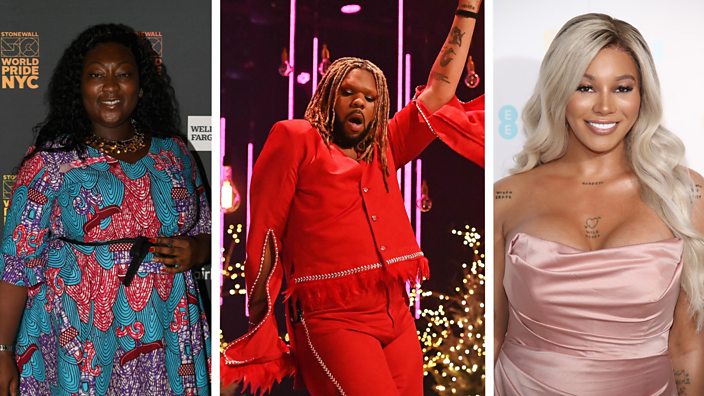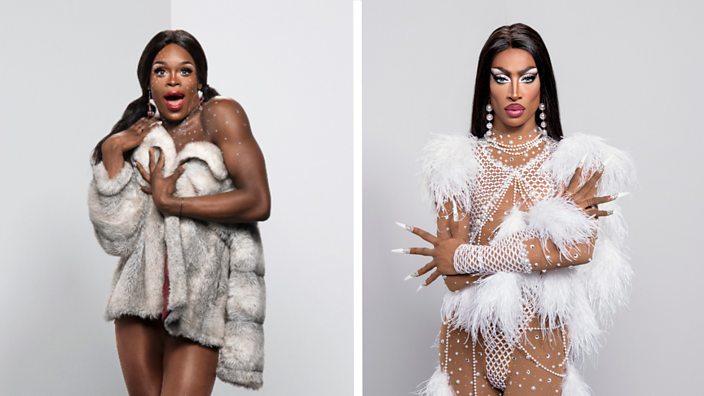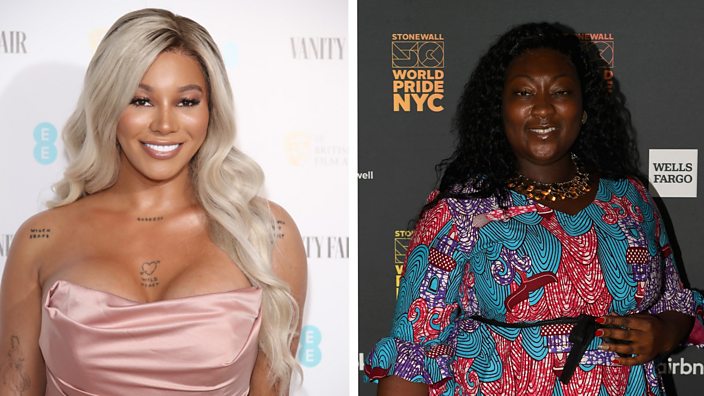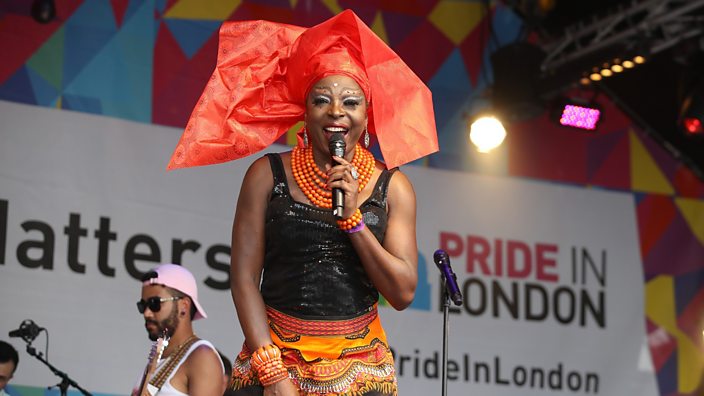
As queens Tayce and Asttina Mandella debate and discuss black British gay icons in the first episode of Drag Race UK series two, Otamere Guobadia, who regularly writes about queerness, race, and pop culture, shares his own thoughts on what it means to be an icon and considers the figures who’ve had the greatest impact on him – and the world.

How do we define an icon?
There’s been much discussion in our pop-cultural discourse about that very question lately.
Who and what burns brightly enough to single themselves out as worthy of this highest praise?
And perhaps no figure is more litigated than the gay icon.
Stans plant their avis as flags in the ground on Twitter, they spam self-made fancams to the world and they fiercely, viciously argue over their most beloved divas and camp fixtures. It’s an endless debate over whose faves may or may not be set in the pantheon of the greats.
And yet, at the same time, the word “iconic” is overused in our queer vocabulary, where everything and everyone – might be, has been, will be – “iconic” for at least 15 minutes. Banal, boring, and brilliant alike.
It is perhaps a bitter pill to swallow, but if everyone’s an icon, no one’s an icon.
True gay icons, however, must shine and disrupt, bending the status quo and exciting the imagination. They do more than entertain: they inspire great adoration and even devotion.
‘Icons are deeply personal, chosen avatars’
RuPaul’s Drag Race throws up regular debates about who and what – particularly among its competing queens and worshipped divas – are iconic within LGBTQ+ culture.
Drag Race is, after all, a show constellated and founded upon icons and iconography.
It is a temple to icons like Dolly, Janet, Madonna, Mariah, and most centrally its unabashed worship of RuPaul herself. And it is, as well, a new kind of Warhol-esque Factory, producing and catapulting its contestants to icon status. Old icons are given their flowers and new icons are forged.
Beyond the thrills of entertainment, our icons – and the dreams they fulfil of representation – matter. Icons are after all often deeply personal, chosen avatars; reflection of self in other. They’re how we imagine ourselves painted among the stars.
Our tweets, our roaring praise, our standom is a kind of prayer offered up to those spotlighted on high pedestals, in the hopes that we too may find ourselves, some day, in their image and likeness. The worship of icons is a great practice of hope and faith.
It’s fitting that the first episode of this series of Drag Race UK should find the girls asked to channel a British gay icon.

But when two of this season’s gorgeous black queens, Tayce and Asttina, reach an impasse with both queens choosing supermodel Naomi Campbell, an interesting conversation ensues.
Neither queen in the moment had any backups, nor could either off the top of their heads think of any black British gay icons that approached the same orbit-creating magnitude of Campbell.
Who, then, are our black British gay icons?
‘Who are the icons that inspire me?’
RuPaul is still undeniably the black gay icon du jour. Still shining, still disrupting, and still demanding her place in the sun as the world’s most famous drag queen.
And within American pop culture, RuPaul sits among a Mount Rushmore of similar black queer American household names.
They are queer idols – like musician Little Richard, poet Langston Hughes, activists Marsha P Johnson and Miss Major, and dancer WiIli Ninja – and patron saint divas, like Diana Ross, Tina Turner, Mariah Carey and Beyoncé.
Across the pond, there are black gay icons far as the eye can see.
And yet our own tapestry is rich with gilt, technicolor threads. Its own stars are worthy of recognition, even if circumstances have obscured them from our view.
Tayce and Asttina’s conversation prompted me to think deeply about my own black British gay icons, the people who have and continue to inspire me.
Not just the household names, but also community-minded individuals, who all around rise into their superstardom.
‘MNEK… Lady Phyll… Munroe Bergdorf’
I think of MNEK, an accomplished songwriter and budding queer pop-star extraordinaire, who in addition to credits with Beyoncé, Madonna, Dua Lipa and Little Mix recently scored his first UK Number 1 with the song Head & Heart.

I think of Lady Phyll – a true mother of our movement – who, accompanied by two busloads of queer black women and armed with an undefeatable tenacity, optimism and desire for community, made the inaugural pilgrimage to Southend-on-Sea in 2006 that would become UK Black Pride.
I think of Marc Thompson – the co-founder of BlackOut UK, a not-for-profit social enterprise run and owned by a volunteer collective of black gay men – who has spent decades devoted to advancing his brothers in struggle.
I think of Justin Fashanu, football’s first openly gay player, who paid the ultimate price for his openness.

I think of Munroe Bergdorf, who faced down one of the biggest beauty companies in the world and not only lived to tell the tale, but thrived – creating and educating a legion of fans (and critics), while constantly celebrating her blackness and transness.
I think of Tanya Compas, who transfigured the pain of her experiences of homelessness and queerphobia into the necessary work of Exist Loudly, an organisation “committed to creating spaces of joy and community for queer Black youth”.
I think of Son Of A Tutu, a veteran drag performer whose traditional Nigerian wear and spiralling geles cut strikingly through the white noise of London’s drag scene.

I think of Travis Alabanza – a once-in-a-generation playwright, thinker and performer – and Isaac Julien – the filmmaker behind the seminal 1989 non-linear, queer noir fantasy Looking For Langston – and Ib Kamara, one of the world’s foremost fashion stylists, who conjures up regal, subversive, afrofuturist scenes and images.
I think of artists like Ajamu X, Rotimi Fani-Kayode, Stephen Isaac Wilson and Campbell X, all of whose sumptuous visual art expand and enrich the narratives of queer, Black Lives.
This list, my list, is of course inexhaustive. There is space held for those icons we may never know, those who lead the fight from the quiet dignity of backrooms, from unseen margins, those whose names and legacies we may never be afforded the great honour of knowing.
And yet, inspired by that simple conversation between Tayce and Asttina, it feels like an immense privilege to bask in this glow of black British gay icons past and present, to be able to nourish myself on the visible vastness of their contributions to our culture in the face of great obstacles.
My heart swells for a generation of queer, black British youth whose paths will be lit by this glistening age of stars.
By: Otamere Guobadia
